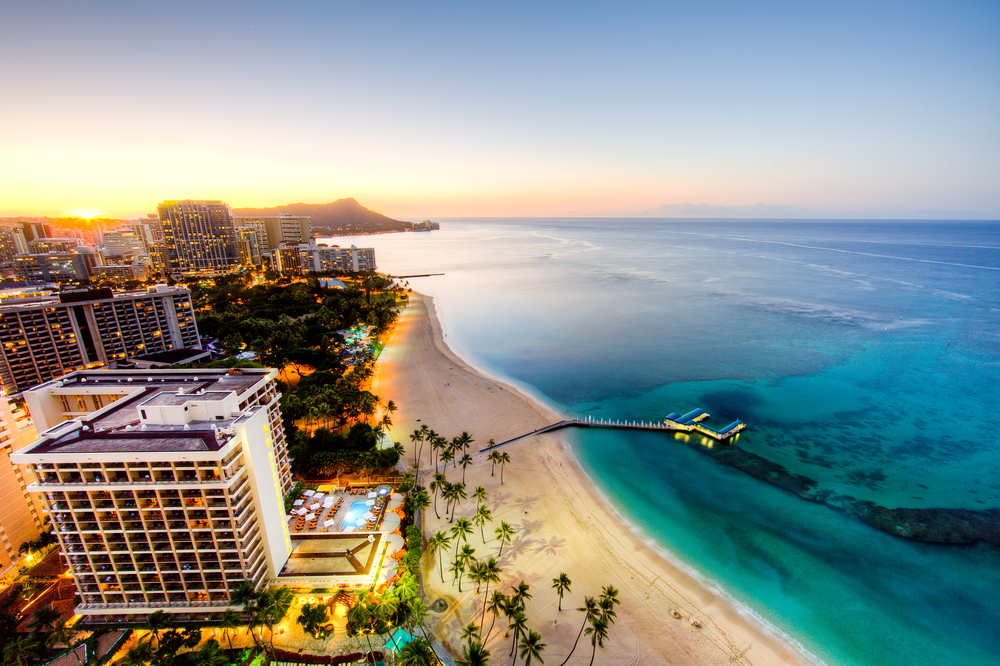Putting a Spotlight on Ocean Pollution Crisis
Lecomte logged about 1,700 miles in the water, using the effort to bring attention to the growing problem of plastic pollution in the world’s oceans. He and the crew had persevered in the face of rough weather systems, seasickness, and a steady stream of garbage. But a storm mid-voyage damaged the mainsail of their research vessel, Seeker, in November, forcing them to limp back to port in Hawaii.
“We had to stop the world record attempt, but throughout the time we kept collecting data and samples about plastic, microplastic, and fibers for all our research partners,” Lecomte said.
He waded ashore Monday on Oahu’s famous Waikiki Beach after jumping into the water to swim the last mile back. He was met on the beach with a lei and fresh pineapple and berries, which he’d been craving after nearly four months offshore.
Lecomte and Seeker’s crew of nine set sail from the Japanese port of Yokohama in June for what turned out to be an eventful six months at sea. They battled seasickness aboard the 20-meter boat, were chased back to port by typhoons, and had to dodge the occasional cargo ship.
Nevertheless, Lecomte averaged about eight hours a day in the water, covering roughly 16 miles a day with a boost from the ocean current. By September, he had swum 1,000 nautical miles from land.
“I never had that movement when I said, ‘Oh man, can I make it? It’s so difficult….’ ” he said. “I managed my effort pretty well, and mentally also, to get in a good rhythm.”
The expedition was scooping 2.4 plastic fragments out of the Pacific per minute using a special net, while geotagging and tracking larger pieces like discarded fishing nets that can trap sea life like porpoises or turtles.
Lecomte said he’s disappointed that he didn’t complete the trans-Pacific swim, but is glad that his bid to be the first person to swim across Earth’s largest ocean drew attention to the plastic crisis.
“It was very important for us to get that involvement of people, to get them interested in and engaged about plastic pollution,” he said. “Because that problem is not going away.”
Getting people engaged in the issue can be difficult because the problem seems so distant to most people, Lecomte added.
“When we got the chance to get some feedback, people following us were saying, ‘Oh, because of what you’re doing I changed my habits. Now I don’t use a straw anymore,’ or something like that,” he said.
“It was an amazing feeling to know we had made an impact,” he went on. “That’s what it takes — one person at a time to make a change. And I hope that what we are doing and what we have been doing is helping, making some of the right changes.”
Tiny bits of plastic are turning up in the bodies of shellfish, seabirds, and terrestrial animals like earthworms — even human feces. They’re harming animals who eat them, and they raise concerns about human health, since harmful chemicals known as persistent organic pollutants such as dioxins and PCBs can bind to plastics. Experts say citizens can help tackle the problem by making sure their household materials are properly disposed of or recycled — or by using less of it in the first place.
The Swim crew also collected data on a variety of subjects for more than a dozen scientific institutions back on shore. They recorded sightings of giant phytoplankton, which cycle from shallow water to the depths to photosynthesize nutrients. They took readings of water temperatures, salinity, and pH, which is a bellwether of climate change, since the oceans are growing more acidic as they absorb more carbon dioxide from the air.
Seeker’s onboard medic Maks Romeijin kept tabs on Lecomte’s heart function, bone density, and vision as he spent much of each day in the water. Those records could help doctors at NASA learn more about the effects of long-term, low-gravity space missions on astronauts.
The voyage’s end followed a storm in November that damaged the Seeker vessel, including wrecking its mainsail. This left the boat with only auxiliary engine power and limited fuel, forcing the crew to cut the trip short.
“It was not a happy moment,” Lecomte said. On the boat in those conditions, he explained, “Everything moves. You cannot do much. I would rather be in the water during that time, because I’m just a little cork going up and down, following the rhythm. When you’re on the boat, you’re being slammed against one wall or another.”
On the way back to Hawaii, he would get back into the water “whenever we saw something interesting, or we needed to retrieve a piece of debris. But mainly we needed to go back to land as soon as possible.”
After a break for repairs and to sit out the winter, Seeker will return to the Pacific and resume course for California via the North Pacific Gyre, an accumulation zone that’s now commonly known as the Great Pacific Garbage Patch. It’s a swirling dead end for the ocean’s currents, which have deposited an estimated 79,000 metric tons of floating plastics — everything from thick tangles of fishing line to tiny fragments of old soda bottles.
Lecomte said that he hopes to get a fish’s-eye view of the patch during that trip.
“The mission doesn’t stop here,” he said, “because we still want to fulfill that mission of collecting data from one part of the Pacific to the other.”

